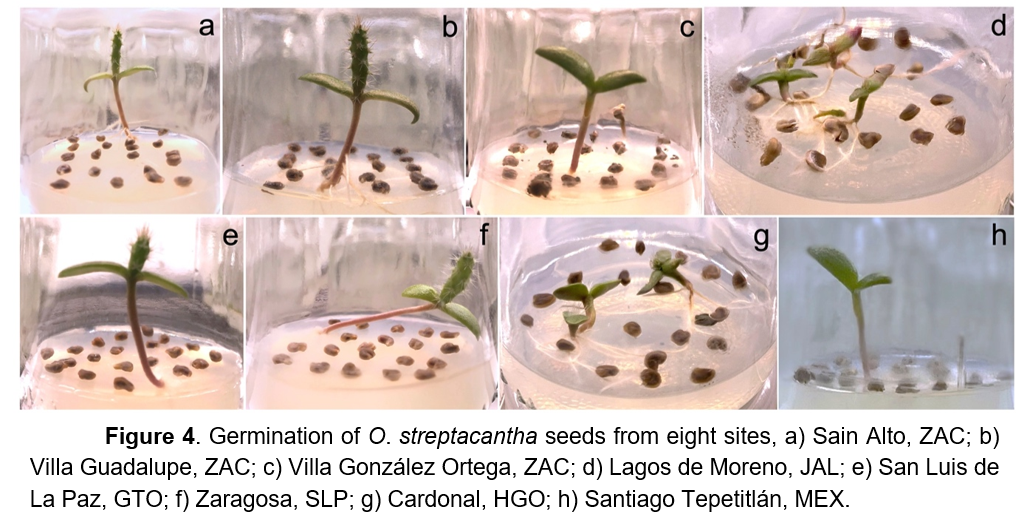Interpopulation variation in seed germination and seed traits of Opuntia streptacantha
DOI:
https://doi.org/10.56890/jpacd.v25i.528Keywords:
Cacti, Parameters physical, Seed germination, Plant populationsAbstract
Cacti have a wide distribution in the arid and semi-arid ecosystems of Mexico, with environmental variations affecting both physical and physiological seed traits. Herein, the physical and ecophysiological traits of Opuntia streptacantha seeds were evaluated to determine whether they are affected by sites. The seeds from eight sites of O. streptacantha from six Mexican states were studied, Sain Alto, Villa de Guadalupe, Villa González Ortega (Zacatecas), Zaragoza (San Luis Potosí), Lagos de Moreno (Jalisco), San Luis de La Paz (Guanajuato), Cardonal (Hidalgo) and Santiago Tepetitlán (Estado de México); being Lagos de Moreno and Santiago Tepetitlán the less dry sites and Villa González Ortega and Cardonal the drier ones. The longest seeds were from Zaragoza (3.81 mm), Villa González Ortega (3.72 mm) and Villa Guadalupe (3.70 mm); the widest and thickest seeds were from San Luis de La Paz (3.44 and 2.16 mm, respectively). The highest volumetric weight was found in seeds from Villa Guadalupe (9.92 kg hL-1), Lagos de Moreno (9.90 kg hL-1) and Santiago Tepetitlán (9.67 kg hL-1). The site San Luis de La Paz (1.31 g) had the highest weight of 1000 seeds and Cardonal (8874 seeds) the highest number of seeds per kilogram. The seeds with the highest moisture content were those from Villa González Ortega (9.81%), and the seeds with the lowest hardness were those from Santiago Tepetitlán (17.95 lbf), and Lagos de Moreno (16.55 lbf). The seeds from the western region of the country (Lagos de Moreno), where the species is less abundant and the environment is moister, showed the highest germination (26%). The seed hardness was negatively correlated with seed germination, with soft seeds having the highest germination. No correlation between seed weight and germination was found. The seed traits are related to environmental factors that influence the seed quality. The physical seed traits and seed germination from different sites for ecological restoration plans need to be considered.
Publication Facts
Reviewer profiles N/A
Author statements
Indexed in
- Academic society
- Journal of the Professional Association for Cactus Development
- Publisher
- Professional Association for Cactus Development




